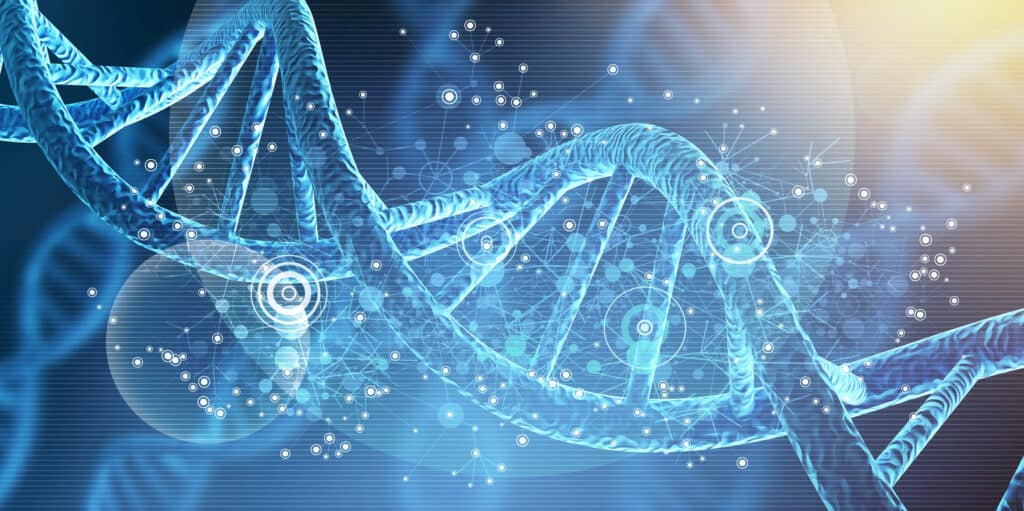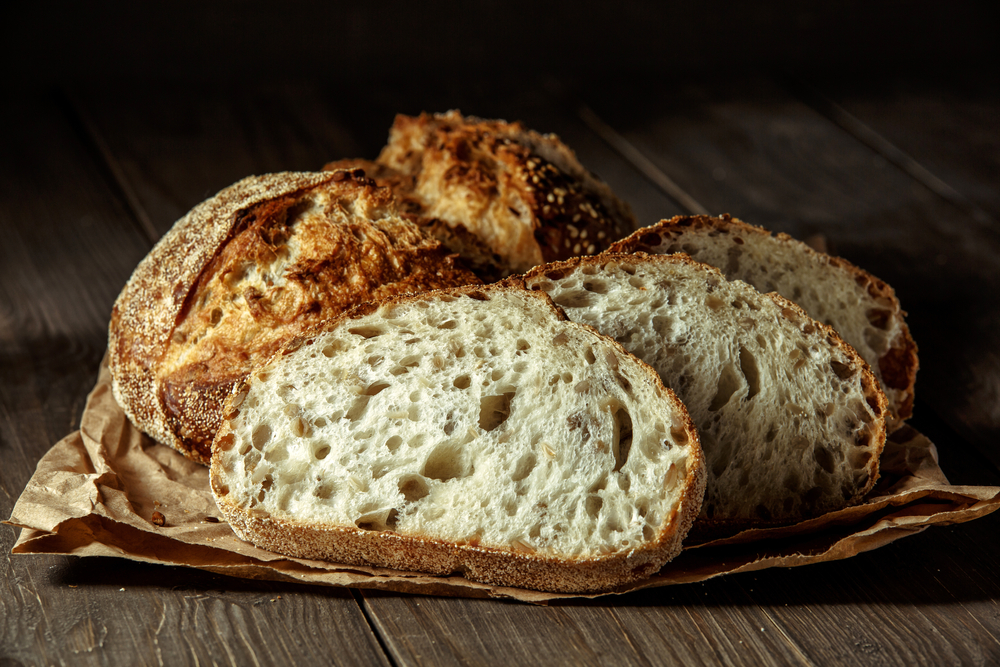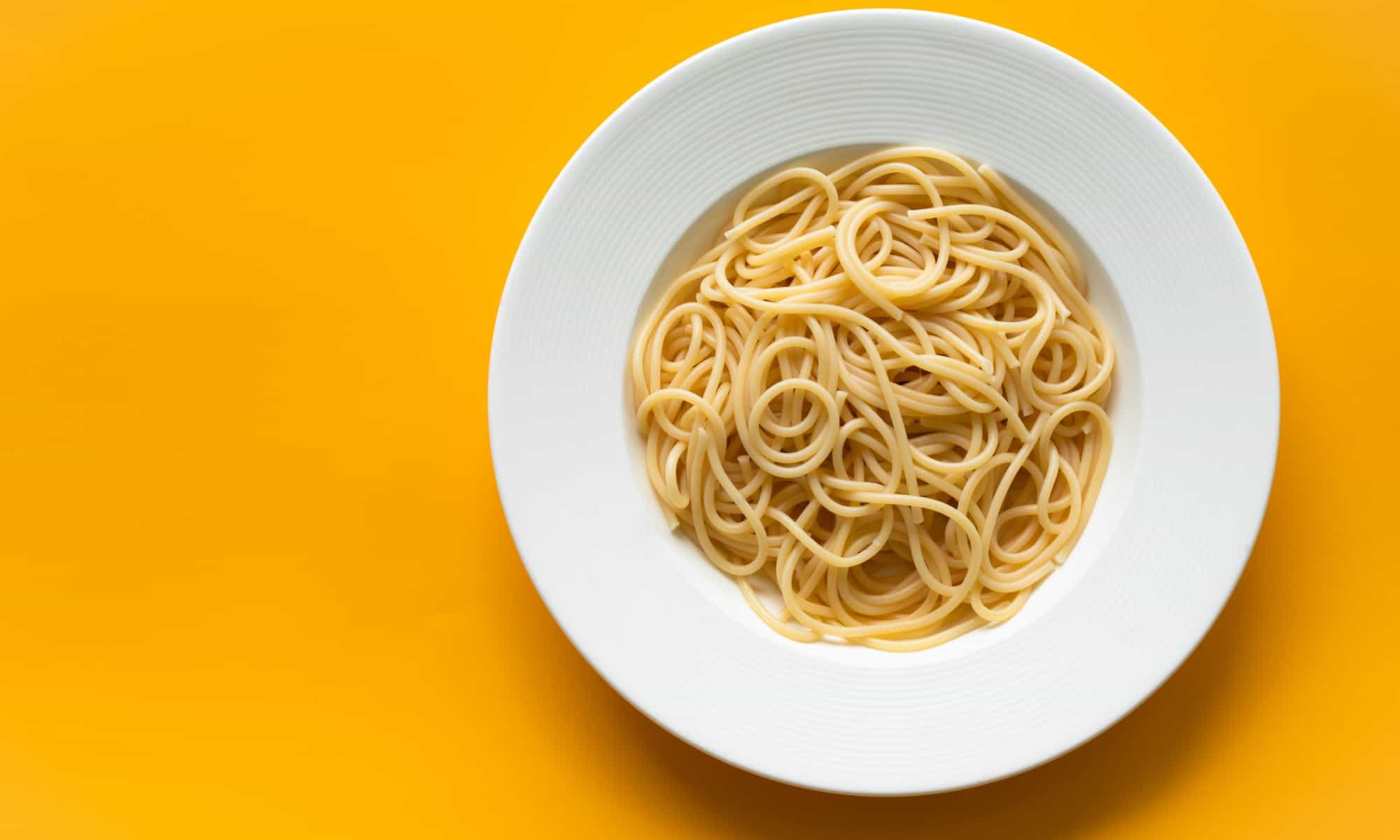Introduction
The construction of carbohydrates can be a complex topic to master. Furthermore, chemistry is a difficult subject, but understanding what molecules and elements make up chemical compounds can help people to better understand the natural world. In addition, it might prove useful to memorize the molecules that create carbohydrates and to memorize the various types of carbohydrates that exist. Discover the monomers and polymers of carbohydrates and find out how to memorize these chemical concepts.

Crackers are an example of a carbohydrate.
©Duntrune Studios/Shutterstock.com
What is a Monomer?
The prefix mono– means “one,” so monomers are comprised of one molecule or a sequence of units. Monomers are simple molecules, which are made up of a few atoms connected by covalent bonds. A covalent bond forms when the electrons of one atom, which circle the nucleus of an atom, connect to the electrons of another atom. Thus, the atoms share electrons with one another, creating a covalent bond. In addition, monomers join to create polymers.
Categories of Monomers
There are three main categories of monomers that exist. These are monosaccharides, amino acids, and nucleotides. For instance, amino acids create polypeptides, which are proteins. Some examples of amino acid proteins are insulin and hemoglobin. Furthermore, amino acids are considered organic molecules, containing elements like oxygen, carbon, hydrogen, and more.
Nucleotides create polynucleotides, which are nucleic acids. Like amino acids, nucleotides are also organic molecules, containing hydrogen, oxygen, and carbon. Nucleotides also have between one and three phosphates. The base of nucleotides is a pentose, which is a five-carbon sugar. The prefix pent– signifies the number five. Examples of nucleotides are DNA and RNA. DNA carries genetic information in almost every organism, and the structure of RNA reflects DNA, but it is single-stranded, rather than double-stranded.
Monosaccharides act as the foundation of carbohydrates, and polysaccharides result from the joining of monosaccharides. Monosaccharides are also organic molecules, including the elements carbon, oxygen, and hydrogen. Sugars and starches form through monosaccharides in carbohydrates. The three main monosaccharide carbohydrates are glucose, fructose, and galactose. In addition, monosaccharides may be ribose or deoxyribose, which act as the base of RNA and DNA, respectively.

Monomers create the foundation of DNA.
©Billion Photos/Shutterstock.com
What is a Polymer?
The prefix poly– describes a number greater than one. Thus, polymers are comprised of individual monomers. Polymers, like monomers, are a type of molecule. However, polymers are larger, more complex, and made up of repeating units. These repeating units are monomers.
Categories of Polymers
The categories of polymers are polypeptides, polynucleotides, and polysaccharides. Amino acid monomers combine to create polypeptides through peptide bonds. Thus, proteins can be comprised of both amino acids and polypeptides. Some proteins formed by polypeptides are keratin, hemoglobin, and insulin.
Polynucleotides form through nucleotides, and this formation results in nucleic acids. Thus, DNA and RNA are polynucleotides, formed by a combination of nucleotides and by monosaccharides, acting as a base.
Polysaccharides are formed by a combination of monosaccharides, and they create complex carbohydrates. Some complex carbohydrates include starch, cellulose, and glucose, and they are made up of repeating units of glucose.
Disaccharide Carbohydrates
The prefix di– in “disaccharide” defines the number two. Therefore, disaccharides are a type of polymer in carbohydrates alongside polysaccharides. When two monosaccharides join through a glycosidic bond, a disaccharide forms. Some disaccharide carbohydrates are maltose, sucrose, and lactose.

Keratin is a type of polypeptide that can promote hair growth and make hair appear shiny.
©iStock.com/Iryna Sukhenko
What are the Monomers and Polymers of Carbohydrates?
The monomers of carbohydrates are monosaccharides, and the polymers are disaccharides and polysaccharides. Monosaccharides combine to create polysaccharides, and examples of monosaccharide carbohydrates are glucose, fructose, galactose, ribose, and deoxyribose. Some disaccharides are maltose, sucrose, and lactose. Examples of polysaccharide carbohydrates are starch, cellulose, and glucose.
Monomers vs. Polymers: A Comparison
| Characteristics | Monomers | Polymers |
|---|---|---|
| Type of Molecule | Simple | Complex |
| Size of Molecule | Small | Large |
| Make-Up | One molecule or a sequence of units | Repeating monomers |
| Proteins | Amino acids | Polypeptides |
| Nucleic Acids | Nucleotides | Polynucleotides |
| Carbohydrates | Monosaccharides | Polysaccharides and disaccharides |
How are Polymers Formed?
When monomers bond to create polymers, the process is referred to as polymerization. In addition, the reaction that forms polymers is a condensation reaction. Another term for a condensation reaction is “dehydration synthesis.” During this process, one monomer loses a hydroxide compound, signified by the letters OH. The other monomer in the reaction loses a hydrogen molecule (H) from its hydroxide (OH) compound.
The OH lost from monomer #1 combines with the H molecule from monomer #2, creating water, which is represented by the nomenclature H2O. As a result, a covalent bond forms between monomers #1 and #2 from the reaction, resulting in a polymer, and the monomers lose water. Thus, the monomers are “dehydrated” during dehydration synthesis because they lose water.

Water is lost from monomers during dehydration synthesis in which a polymer results.
©New Africa/Shutterstock.com
How to Remember the Monomers and Polymers of Carbohydrates
Remembering the monomers and polymers of carbohydrates is not difficult, but remembering the type of carbohydrates they form can prove challenging. Monosaccharides are a type of monomer, and both terms begin with the prefix mono-, meaning one. To remember the monomers of carbohydrates, reference the prefix mono-.
The same goes for remembering that polymers are related to polysaccharides. Both terms contain the prefix poly– meaning more than one. However, the polymers of carbohydrates also contain disaccharides. The prefix di– means two. Since poly– means greater than one, and the number two is greater than one, then the prefix di– also relates to the prefix poly-, making disaccharides a type of polymer. To remember the polymers of carbohydrates, reference the prefixes poly– and di-.
How to Remember Types of Carbohydrates
The table below outlines examples of carbohydrates through their monosaccharides, disaccharides, and polysaccharides.
| Monomers | Polymers | |
|---|---|---|
| Monosaccharides | – Glucose – Fructose – Galactose – Ribose – Deoxyribose | N/A |
| Disaccharides | N/A | – Maltose – Sucrose – Lactose |
| Polysaccharides | N/A | – Starch – Cellulose – Glucose |
Mnemonic Devices
To remember the monosaccharide carbohydrates, the usage of a mnemonic device proves helpful. Mnemonics can help in memorization and learning, usually characterized by a pattern, rhyme scheme, or phrase. Some mnemonic devices can be acronyms. In this instance, reference this mnemonic to remember monosaccharide carbohydrates:
“Gary Finds Grapes Really Delicious”
The first letters of every word in this phrase (G, F, G, R, and D) correlate to monosaccharide carbohydrates: Glucose, Fructose, Galactose, Ribose, and Deoxyribose. In this phrase, there is only one subject: Gary. The prefix mono– in “monosaccharides” means one. Thus, the one subject, Gary, correlates to the number one, found in the prefix mono-.
For disaccharide carbohydrates, reference this mnemonic device:
The first letters of every word in this phrase (M, S, and L) correlate to disaccharide carbohydrates: Maltose, Sucrose, and Lactose. This mnemonic phrase mentions two animals. The prefix di– in “disaccharides” means two. Thus, the two animals correlate to the number two, found in the prefix di-.
Finally, for polysaccharide carbohydrates, reference this mnemonic device:
“Students Complete Geometry”
The first letters of every word in this phrase (S, C, and G) correlate to polysaccharide carbohydrates: Starch, Cellulose, and Glucose. This mnemonic phrase mentions multiple students. The prefix poly– in “polysaccharides” means multiple or more than one. Thus, the multiple students correlate to any number greater than one, found in the prefix poly-.
While there are more monomer and polymer carbohydrates in existence than those referenced in the table, the above mnemonic devices may be a useful start in remembering long lists of carbohydrates. As one includes more carbohydrates in the lists of monosaccharides, disaccharides, and polysaccharides, these mnemonic devices transform into detailed sentences and may change.

Using mnemonic devices can improve learning and memorization.
©Monkey Business Images/Shutterstock.com
What is the Significance of Carbohydrates?
Carbohydrates are, in essence, sugars that give glucose to the body. The body then turns glucose into energy. Other functions of carbohydrates are storing energy, storing protein and fat for other functions, and building macromolecules. Many often falsely consider carbohydrates “bad foods.” Some examples of carbohydrate foods are bread, milk, pasta, potatoes, and more. However, carbs can greatly benefit the human body, as they are the primary source of energy.
While carbs in excess may lead to negative health effects, they should not be avoided as a whole. Some benefits of carbohydrates are increased energy, better digestive health, and better processing of the neurotransmitter serotonin. If carbs are cut out of the diet, negative health effects include high-stress levels, low blood sugar, and poor digestive health. Overall, carbs are important in creating a healthy body that operates to its fullest potential.

Bread is a type of carbohydrate that gives glucose to the body, which is turned into energy.
©Bukhta Yurii/Shutterstock.com
Thank you for reading! Have some feedback for us? Contact the AZ Animals editorial team.








